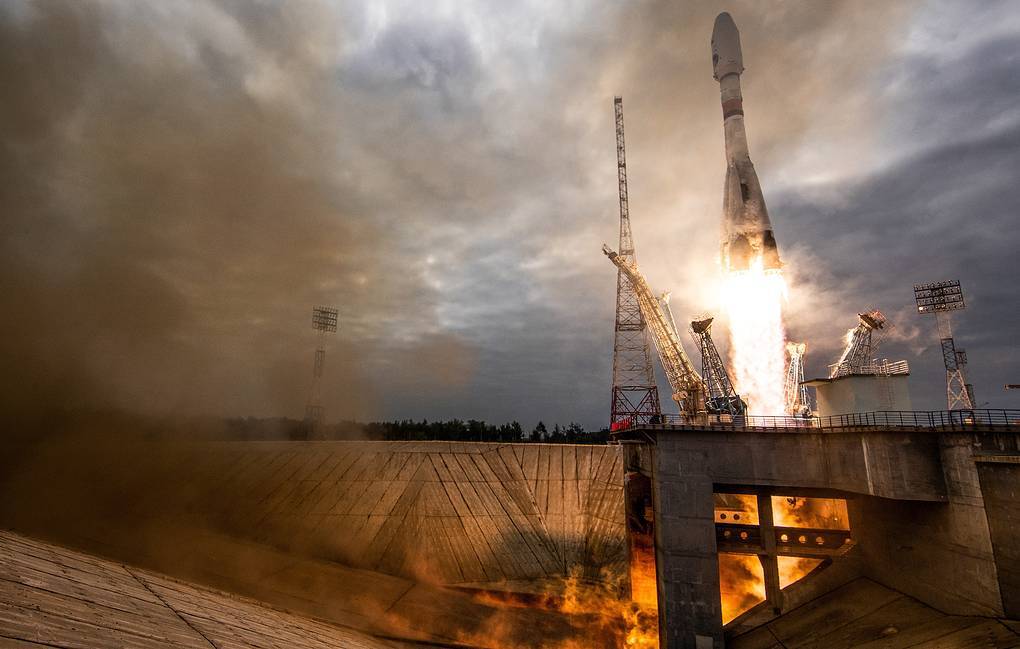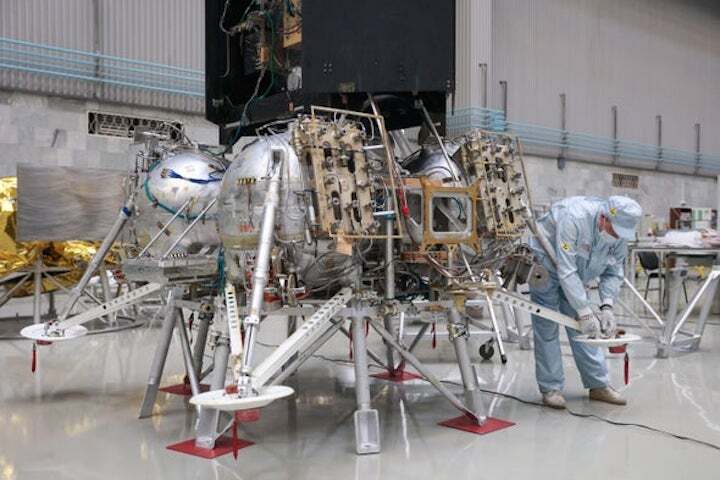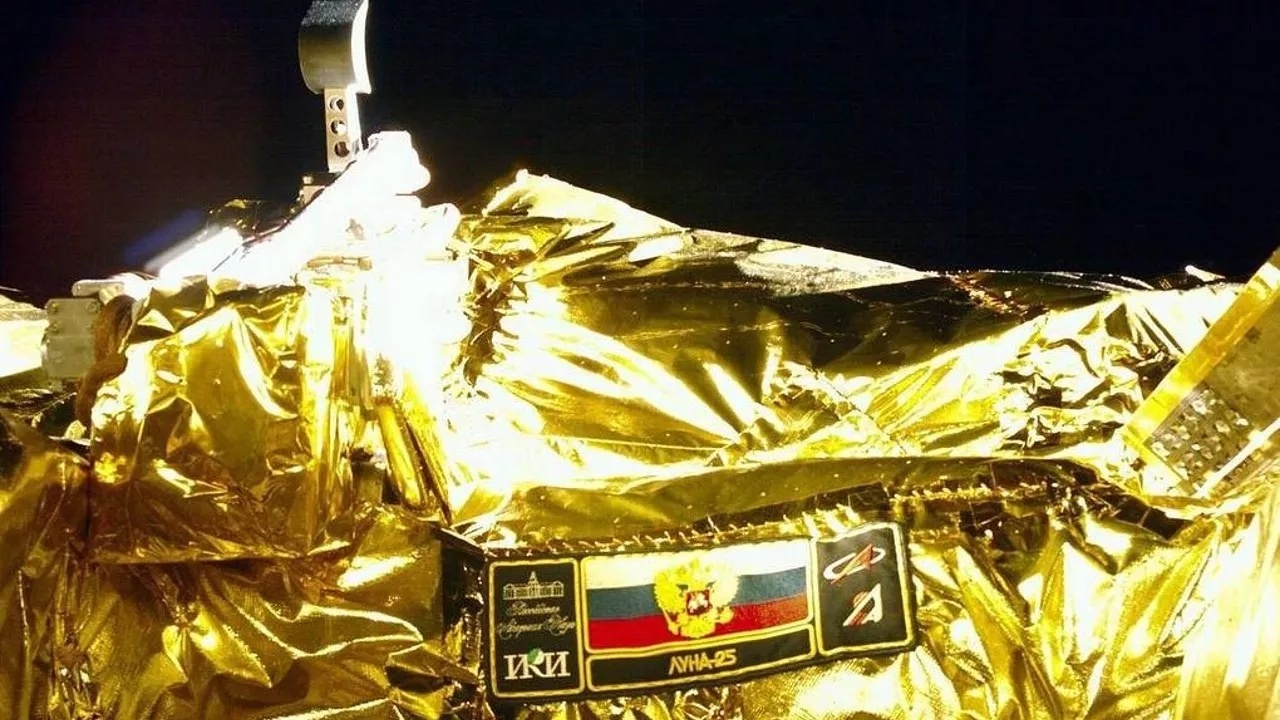SVOBODNY /Amur Region/, August 12. /TASS/. The first orbit correction of the Luna-24 mission to the Earth’s natural satellite was carried out on Saturday, Roscosmos told reporters.
"Today the Luna-25 automatic probe, made in the Lavochkin Research and Production Association (incorporated into the State Space Corporation Roscosmos), carried out the first correction of the flight trajectory to the natural satellite of the Earth," the Russian space agency said.
Roscosmos added that the propulsion system turned on at 4:00 p.m. Moscow time to operate for 46 seconds.
The Soyuz-2.1b launch vehicle with the Luna-25 automatic probe blasted off from the Vostochny Cosmodrome on August 11 at 2:10 a.m. Moscow time. On August 16, the apparatus is to enter the near-lunar orbit, and on August 21 it is expected to make a soft touchdown on the Moon.
The main task of Luna-25 will be to test soft landing technology. The mission may become the first apparatus to land at the South Pole of the Earth's natural satellite. The lander will study the internal structure and exploration of natural resources, including water, as well as investigate the impact of cosmic rays and electromagnetic radiation on the surface of the Moon.
Several cameras are mounted on the craft. They will capture a timelapse of the landing, an HDR panorama of the Earth's natural satellite and settling dust for its subsequent study. Luna-25 will conduct pre-programmed surveys, as well as take images of the Moon on command from Earth.
Quelle: TASS
+++
ISRO the hare, Roscosmos the tortoise? Chandrayaan-3 and Luna-25 race for the moon
Russia's first moon lander after 47 years will land before India's, even though we got into lunar orbit before it was even launched!
After 47 years, Russia is set to return to the Moon with its Luna 25 lander mission.
Luna-25 took off atop a Soyuz-2.1b rocket from the Vostochny launch facility in Russia at 2:10 a.m. Moscow time (4:40 am IST) on Friday, TASS news agency reported.
Russia's last lunar mission, Luna-24 was launched in 1976, during the former Soviet Union period.
It successfully delivered about 170 grams of moon samples to Earth.
Luna-25 is expected to reach the Moon’s orbit on August 16 before landing on August 21.
The spacecraft will spend between three and seven days about 100 km above the lunar surface before touching down in the area of the Boguslawsky crater.
Manzinus and Pentland-A craters have been named as alternative landing sites.
Once landing safely, Luna-25 aims to work on the lunar surface for at least one Earth year.
Its key goal is to polish the soft landing technology. If successful, the mission may become the first spacecraft ever to land near the South Pole of Moon.
Luna-25's "most important task, to put it simply, is to sit where no one has sat," Maxim Litvak, a chief scientist for the mission from Russia's Space Research Institute (known by the acronym IKI), said in a posting on the IKI website.
"Now everyone is aiming for the polar regions; this area is intriguing to everyone in the scientific community," Litvak said.
"There are signs of ice in the soil of the Luna-25 landing area; this can be seen from data from orbit. In the equatorial regions where we landed earlier, this is not the case."
Interestingly, Luna-25 is slated to touch down around the same time, and in the same general area, as India's Chandrayaan 3 probe, which launched on July 14 and arrived in lunar orbit on August 6.
US space agency NASA also plans to establish one or bases near the moon's south pole by the end of the 2020s, via its Artemis programme.
The spacecraft aims to search for natural resources, including water, and study the effects of space rays and electromagnetic emissions on the lunar surface.
The lander is equipped with several cameras. They will make a timelapse footage of the landing and an HDR wide-angle image of the moonscape.
Luna-25 will turn its cameras during pre-programmed periods and on a signal from the Earth, TASS reported.
Meanwhile the Russian space agency Roscosmos' Director General also announced timeframes for upcoming Moon missions.
"Luna-26 is scheduled for 2027, Luna-27 - for 2028, Luna-28 - in 2030 or later," Yury Borisov was quoted as saying.
After that, Russia's space corporation will launch the next phase of the programme.
"Subsequently, we will begin the next phase - a manned mission and the construction of a lunar base - with our colleagues from China," Borisov said. "This would be a long-lasting and important program and we expect many countries to join it."
Quelle: National Herald
----
Update: 18.08.2023
.
Russia's Luna-25 spacecraft enters lunar orbit
India's Chandrayaan-3 entered the moon's orbit earlier this month ahead of a planned touchdown on the south pole of the moon later this month.
The Luna-25, which is roughly the size of a small car, will aim to operate for a year on the south pole, where scientists at NASA and other space agencies in recent years have detected traces of frozen water in the craters.
The presence of water on the moon has implications for major space powers, potentially allowing longer human sojourns on the planet that would enable the mining of lunar resources.
No Russian spacecraft has entered lunar orbit since Luna-24, the Soviet Union's 1976 moon mission, according to Anatoly Zak, the creator and publisher of www.RussianSpaceWeb.com which tracks Russian space programmes.
"Entering lunar orbit is absolutely critical for the success of this project," Zak told Reuters. "This is a first for the post-Soviet period."
"Some are calling this the second lunar race so it is very important for Russia to resume this programme. Luna-25 is not just one mission - it is part of a much broader Russian strategy that stretches 10 years into the future."
Quelle: Reuter
+++
Russia's Luna-25 moon lander reaches lunar orbit
This surge of interest is strongly tied to the south pole's presumed stores of water ice, which NASA and exploration advocates think could support human outposts and supply propellant for spacecraft headed to Mars and other distant destinations.
Quelle: SC



